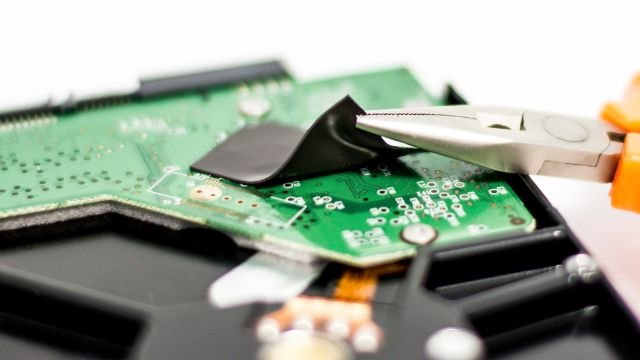Are You Supposed to Use Thermal Paste With RAM?
CPU and GPU are the two most obvious computer components that need thermal paste to perform well. However, some users keep wondering about other components that run hot, and whether they should apply thermal paste to them.
Take your RAM sticks, for example, do you need thermal paste on those? What’s bound to happen if you’ve already applied the paste on them? Here’s everything you need to know.
Does computer RAM need thermal interface materials?
If your RAM sticks don’t have a custom heat sink or spreader installed on them, you don’t need any thermal interface. In fact, there’s no way you can even apply thermal paste on them if there’s no heat sink.
On the other hand, if you do have a heat sink, then yes, you need a thermal interface to transfer the heat from the RAM sticks to the heatsink.
If you don’t have a heat sink installed on your RAM sticks yet and wondering whether you should get one, let us help. Most people don’t need a heat sink for their RAM. Unlike a CPU and a GPU, RAM simply doesn’t get hot enough for it to actively need heat dissipation through a heat sink.
If you’re a super user who’s fond of overclocking your computer components and/or getting the most out of them, then yes, getting a heat sink would be a great idea. But if you’re an average user, you don’t need one.
Thermal paste and thermal pad, which is better for RAM?
Thermal pads are usually a better choice for RAM.
The point of contact between RAM chips and heatsink is quite small; much smaller than the one between a CPU and heatsink. If you try to apply thermal paste on RAM chips, it would be really hard for you to be precise.
As thermal pads are easier to handle when compared to thermal pastes, they’re recommended for RAMs.
Furthermore, thermal paste is better suited for CPU/GPU because these components produce a lot of heat which needs dissipation, and thermal paste has much better thermal conductivity compared to thermal pads.
On the other hand, the RAM doesn’t produce that much heat. So, it doesn’t really need the full thermal performance of a thermal paste. A thermal pad can do the job just fine.
What happens if I use thermal paste on RAM?
If you’ve managed to correctly apply thermal paste between your RAM chips and the heat sink, nothing really happens. In such a case, your RAM sticks will work as they usually would with thermal pads applied.
However, the crucial word here is “correctly”. It’s easy to create a mess while trying to apply thermal paste on your small RAM chips located on the sticks.
If you’re going to attempt to do it, make sure you have cleaning equipment by your side. If something goes wrong and the thermal paste ends up on other computer components, like your motherboard or even inside a RAM slot, you should clean it right away.
What if thermal paste leak on side of the RAM or get into the RAM slot?
If the thermal paste has leaked out into your RAM slot, on the side of the RAM chips, or even on the motherboard, what do you do?
Well, the first thing to do is make sure your computer has no power. If it does, turn it off immediately. A conductive substance doesn’t cause any problem if there’s no current going through it.
After you’ve shut off your computer, you need to see whether your thermal paste is electrically conductive or not. If it’s not, current won’t be able to flow through it and hence, won’t harm your computer. But — if it’s electrically conductive, current may flow through the thermal paste and cause problems.
To find out whether your paste is electrically conductive or not, check its product specifications inside the packaging or on the website.
Now, here’s what we recommend. Even if your paste is not electrically conductive, you should still clean it up before using your computer again. It just makes sense that you leave no sticky substance somewhere where it shouldn’t be.
But how do you clean the thermal paste from your computer components or from inside a RAM slot?
You could use cleaning alcohol with paper towels for this job. Soak the paper towel with rubbing alcohol and wipe off the excess thermal paste with it. If you need to reach inside the RAM slot to clean the thermal paste from there, put the soaked paper towel on the edge of a credit card, then slide it inside the RAM slot.
However, be noted that finding the right concentration of alcohol could be difficult. If you are having trouble finding it, don’t just use regular alcohol — it’s not meant for cleaning.
In such a case, you should get a dedicated thermal paste cleaning solution.
Kooling Monster KLEAN-01 is a special compound that can easily clean up a thermal paste from any computer component. In the package, the compound comes pre-applied on cleaning wipes, so you don’t even have to look for a paper towel, either.
The package also comes with a pair of protective gloves, so your hands don’t get dirty while dealing with chemicals.
The bottom line
Thermal paste is an essential part of your CPU’s and GPU’s thermal management system, but does it make sense to apply it on RAM? Not really. Most people don’t need a custom heat sink for their RAM, so they don’t need any thermal interface either.
But if you do have a custom heat sink on your RAM, it’s better to get a thermal pad for it instead of a thermal paste.




